Guitar World Verdict
An incredibly well-appointed acoustic for the price. The narrow nut won't be to everyone's tastes, but there's a lot to like here.
Pros
- +
Well-thought-out construction.
- +
Good sounds with great onstage potential.
- +
All-solid woods? Impressive spec for the money.
- +
Gigbag included.
Cons
- -
That narrow nut might be an annoyance to some fingerstylists.
You can trust Guitar World
Once upon a time an acoustic maker who spec’d out its instruments with the ‘all-solid woods’ merit badge to the forefront could be king or queen of the heap.
But times have changed and conservation now rules the roost, meaning that now some of the six-string formulae of yore are considered to be all but invalid.
We speak to luthiers all the time and many are saying that sometimes laminated sides are actually a very sensible idea, especially when you look at things from the point of view of structural integrity.
“Think of the body of an acoustic guitar to be a little like a drum,” one luthier told us. “You need a rigid frame with a resonant, flexible top to make it work.” Okay, we can see that’s a plan.
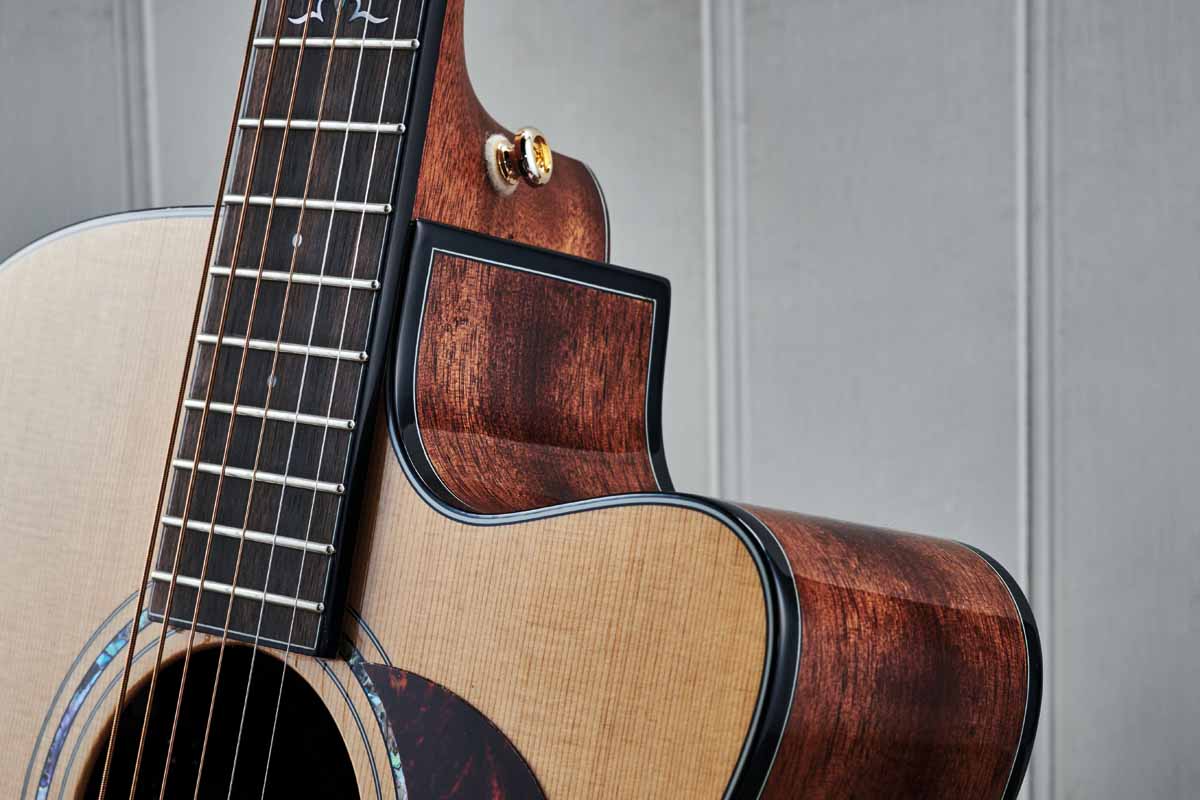
The big manufacturers have been at it for a while, too. Taylor offers ‘layered’ backs and sides, Martin uses ‘fine veneer’ and has taken the even more extreme route of using high-pressure laminate backs and sides on some of its lower-priced models.
So, where does that leave us in the ‘all-solid woods’ debate now that we’re all being encouraged to be more ecologically aware?
Everything looks in order here with a fine-looking piece of timber and an old-timey amber glow that ticks the aesthetics box nicely
Well, there is another way. Traditionalists can still have all-solid woods if that’s what floats their boat. You can pay top dollar for the remaining supplies of the rare stuff, or you can choose your woods with one eye on the planet’s dwindling resources (and your own pocket) and act accordingly – which is what Cort is doing here.
The Gold-OC6 wears its ‘all-solid woods’ spec with pride, and nobody’s planet is going to end up devastated in the process. Sounds good on paper, but what’s it like in practice? Let’s test its mettle…
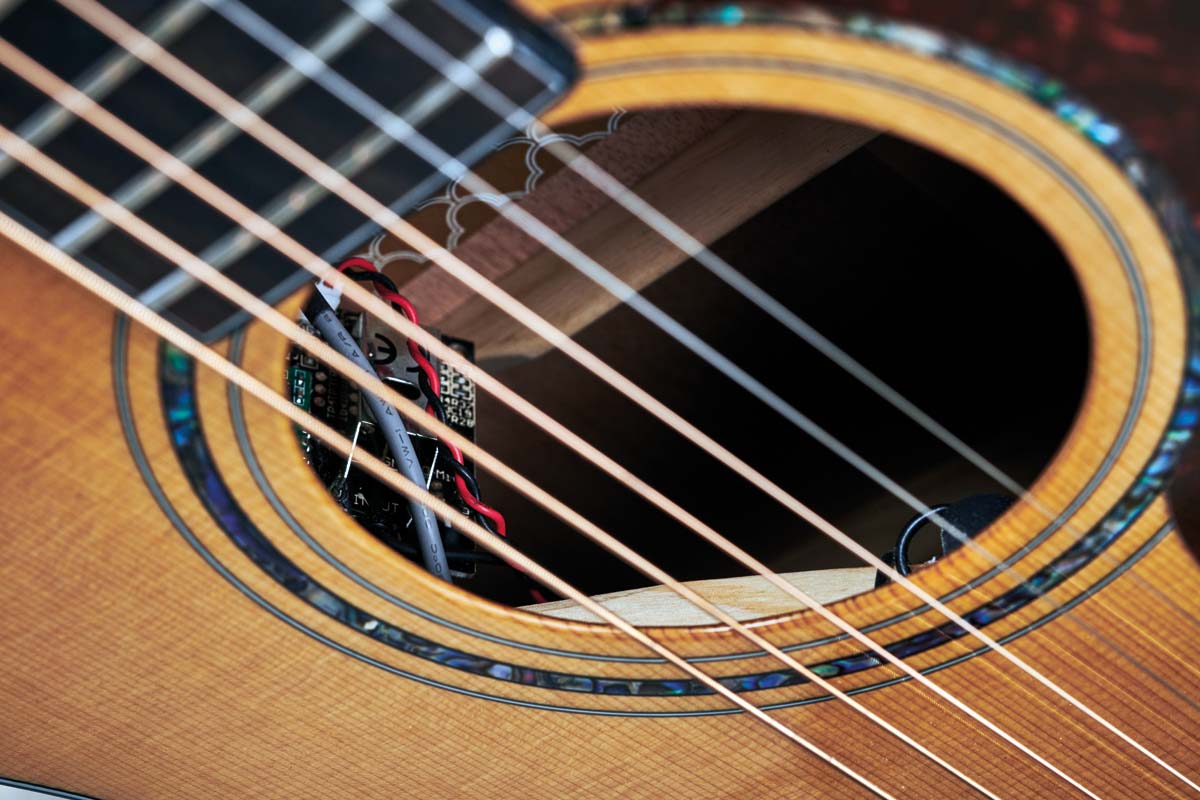
Feel & Sounds
Cort’s Gold-OC6 is an OM cutaway acoustic, the company telling us that “this body style, initially developed in the 1920s, captures the pre-war era tone that is often sought after. Sonically, it delivers a sound that is larger than its compact size would hint at and with a level of dynamic responsiveness that is a joy to play.”
Cort has gone to great lengths to give this guitar a good level of kerb appeal, along with its alternative body woods
In order to achieve this the company has employed a Sitka spruce top that’s been treated with Cort’s own variation on the torrefaction process – Cort calls it ATV, which stands for ‘Aged To Vintage’ – where the wood is baked to remove excess moisture and render it more resonant at the same time.
Everything looks in order here with a fine-looking piece of timber and an old-timey amber glow that ticks the aesthetics box nicely.
Back and sides are okoume, a mahogany-esque wood that is turning up more and more often these days. In fact, it features on the Eastman SB55/v reviewed later on in this issue.
Okoume is light in weight (something we noticed immediately on picking up the OC6), hails from the Gabon region of Central Africa, and looks a lot like mahogany from a cosmetic point of view. What it sounds like will be revealed in a few paragraphs.
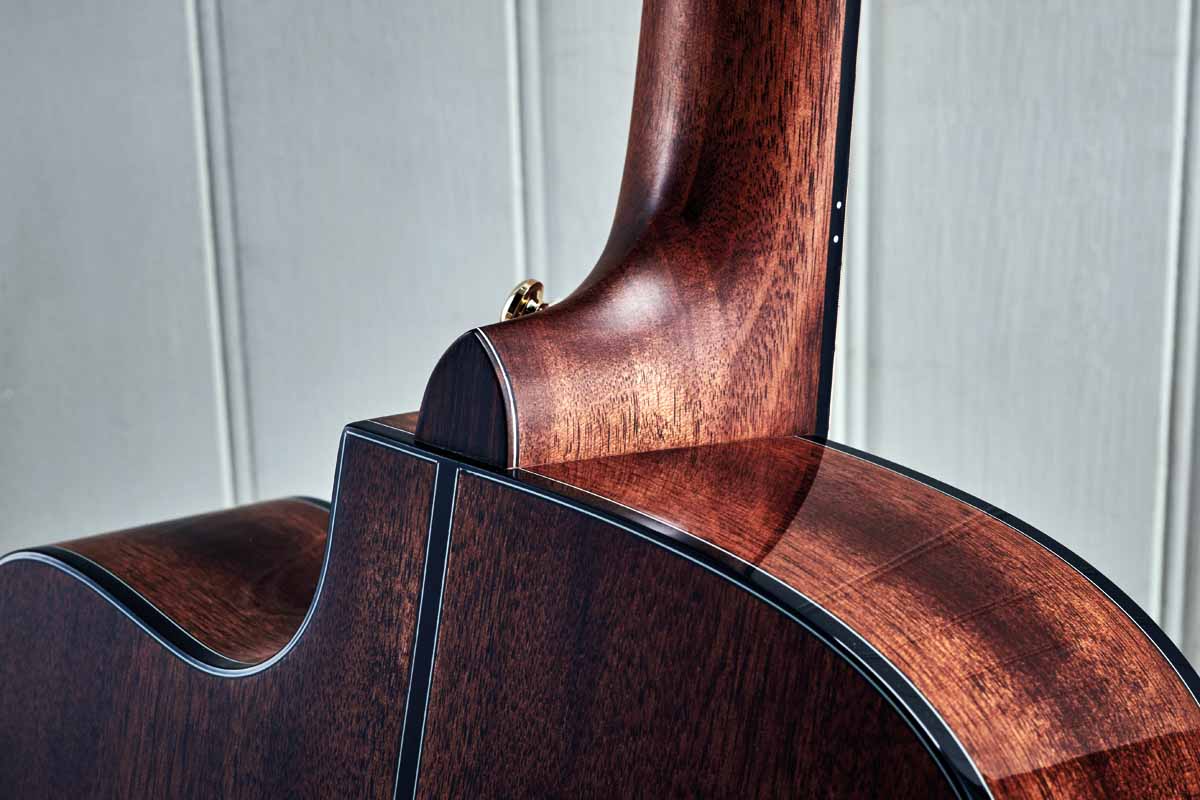
The Cort’s neck is another mahogany substitute called palaquium, a wood that is widely available in the southern hemisphere, particularly in India and southeast Asia, and once again could easily pass for mahogany with even a relatively well-trained eye.
While we’re here, it’s notable that whereas the two principal methods for neck joints on acoustic guitars are either bolt-on or the more traditional dovetail joint, Cort has chosen to use a hybrid of both.
The OC6’s neck fits into the body via a dovetail joint. The neck has also been strengthened with two strips of walnut. Both features have an air of sophistication to them
The OC6’s neck fits into the body via a dovetail joint and is secured using a bolt; the best of both worlds, then. The neck has also been strengthened with two strips of walnut that sit either side of the truss rod.
Both features have an air of sophistication to them and we’ve not seen too many acoustics pass our way with this kind of thing going on under the hood, especially at this price.
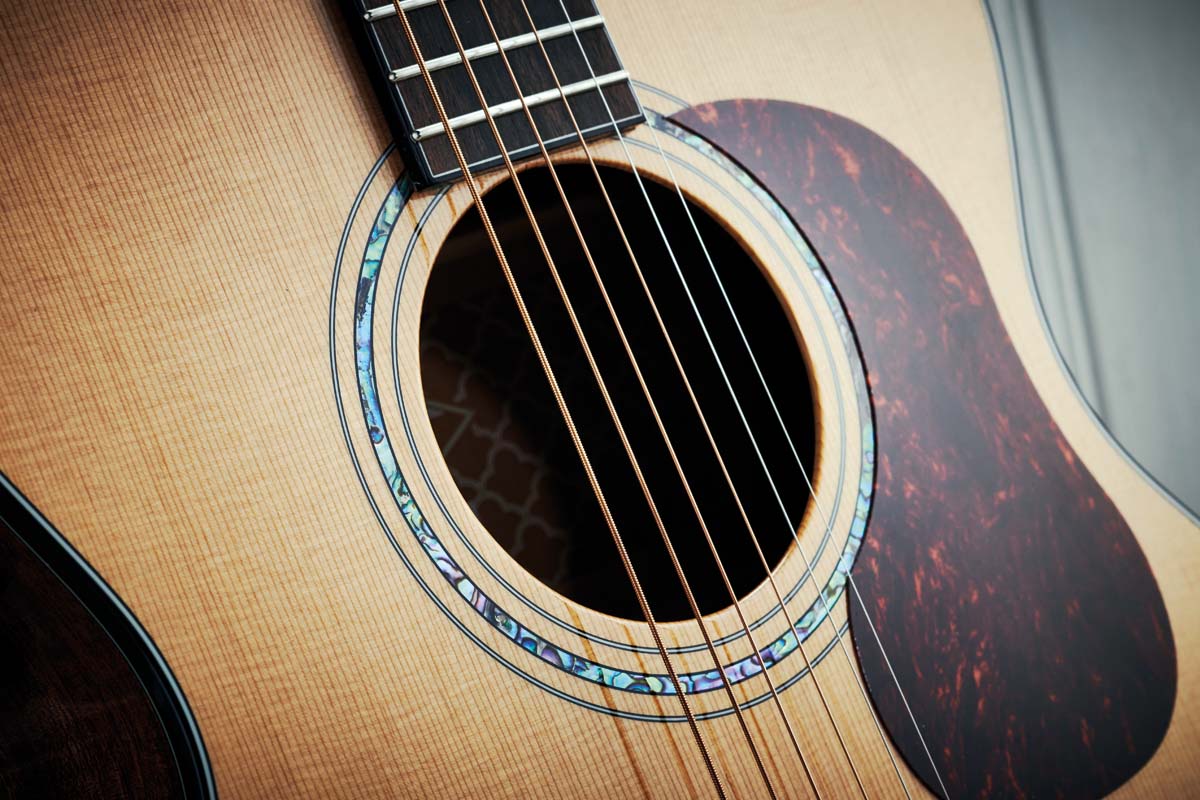
Returning to the guitar’s construction, we find a Macassar ebony fretboard with mother-of-pearl inlays in all the familiar places. The bridge is Macassar ebony, too, and the mother-of-pearl inlay styling is reflected in two small flourishes either side of the bone saddle.
Cort has gone to great lengths to give this guitar a good level of kerb appeal to go along with its impressive selection of alternative body woods.
There’s plenty more appeal with the details: Grover open-back gold-coloured tuners, a bone nut, abalone rosette and a mock tortoiseshell scratchplate. It’s a good-looker, for sure, so let’s see what happens when we take it out for a spin.
The nut width is similar in terms of feel to that of a Fender American Pro Strat, and Cort tells us that this is something players with smaller hands will find more comfortable
As we’ve mentioned, the first thing you notice when you pick up the OC6 is its weight. It’s a lot lighter than you think, especially if you’re familiar with OM-style acoustics in general.
The next thing is the width of the nut. At 43mm, the nut width is similar in terms of feel to that of a Fender American Pro Strat, and Cort tells us that this is something players with smaller hands will find more comfortable.
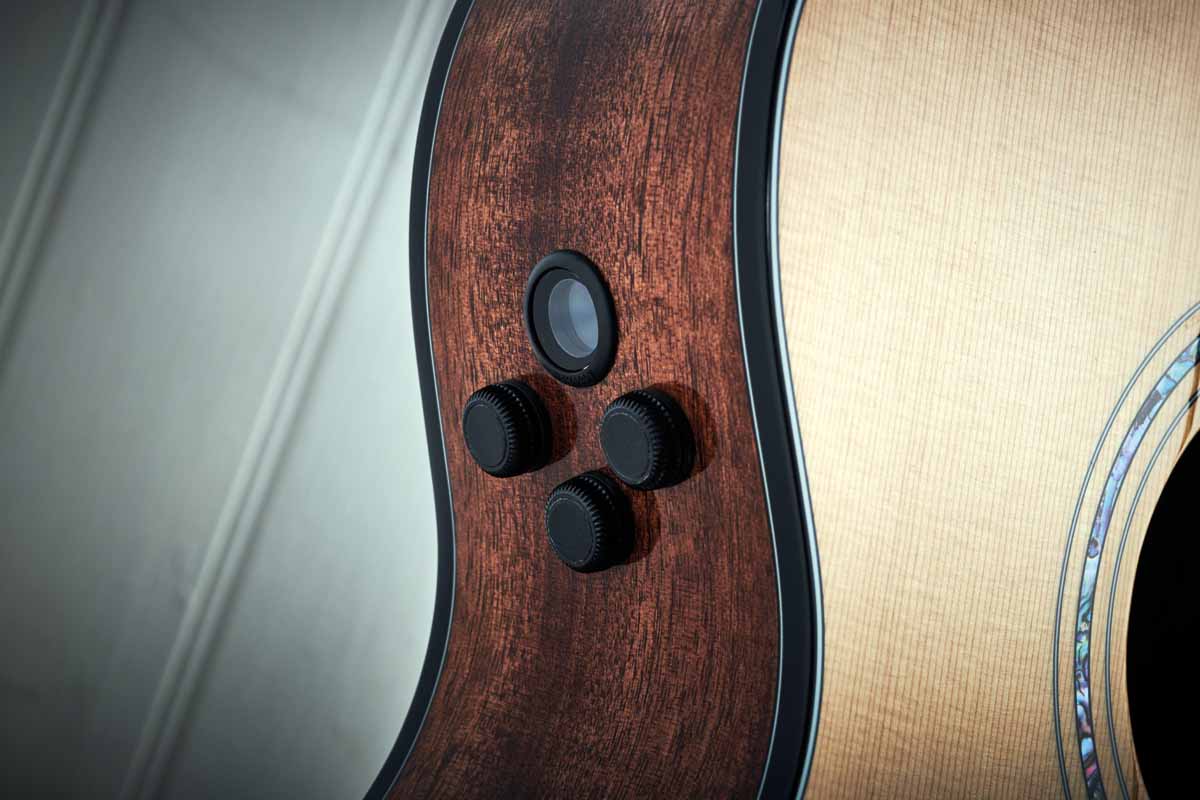
Acoustic traditionalists who enjoy a little more space for their digits at this point might be a little disappointed as the Cort’s spec here is a few millimetres short of Martin’s current OM spec, for instance.
Those of us with a somewhat ‘Desperate Dan’ glove size might suffer a few collisions in this region, too.Those few extra millimetres down there can make all the difference.
If we were adopting the OC6, we’d put a slightly heavier gauge of string on it in order to pull out the lower mids and bass a little more, but a lot of that is down to personal preference
As far as sounds go, a few casual chordal strums reveal a broad and breathy sound typical of this body size with a good amount of volume and excellent sustain.
If we were adopting the OC6, we’d put a slightly heavier gauge of string on it in order to pull out the lower mids and bass a little more, but a lot of that is down to personal preference as there’s plenty of both to work with here.
As far as the trebles go, there’s a good proportion of sweetness and presence without any problems in terms of projection. This thing is loud.
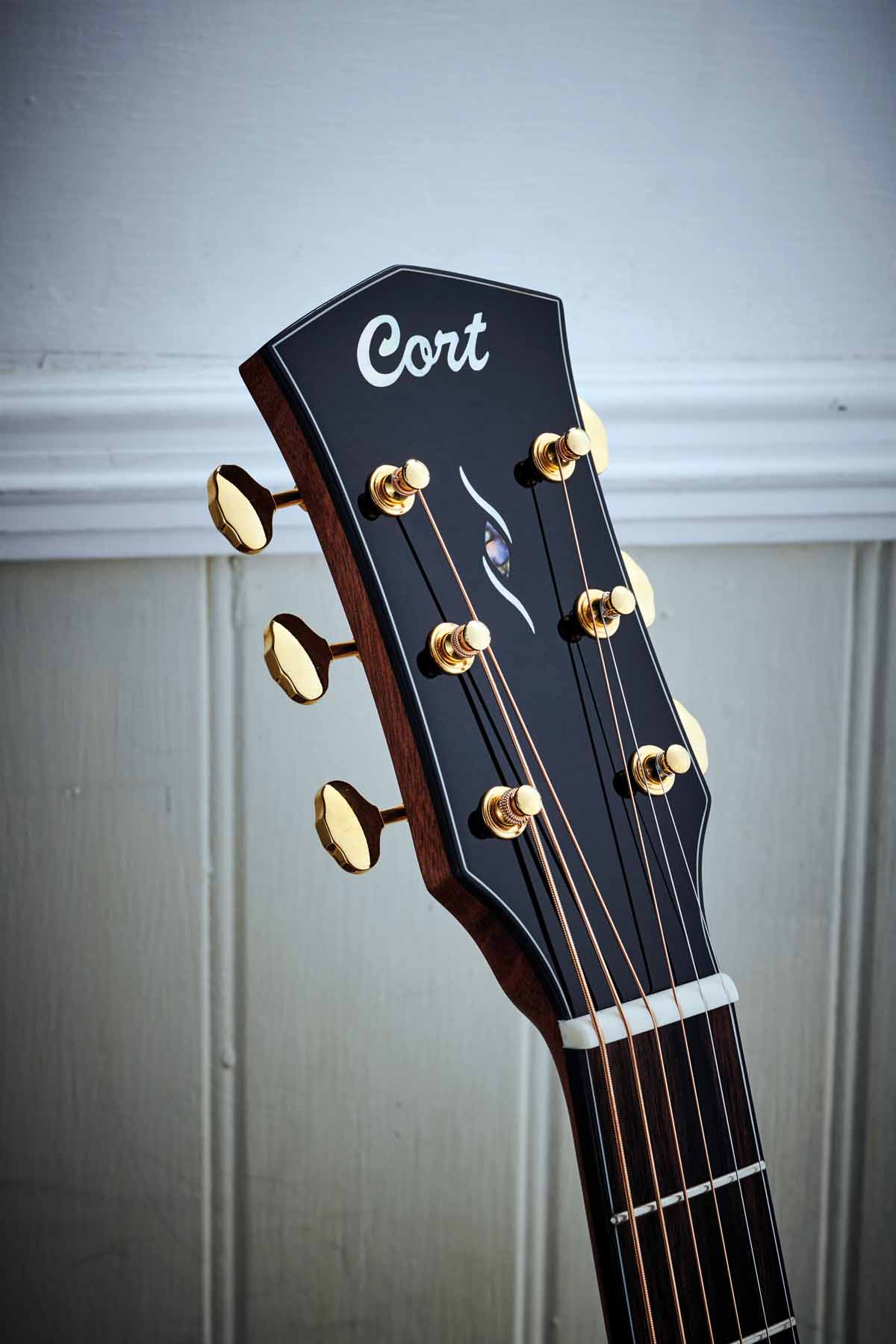
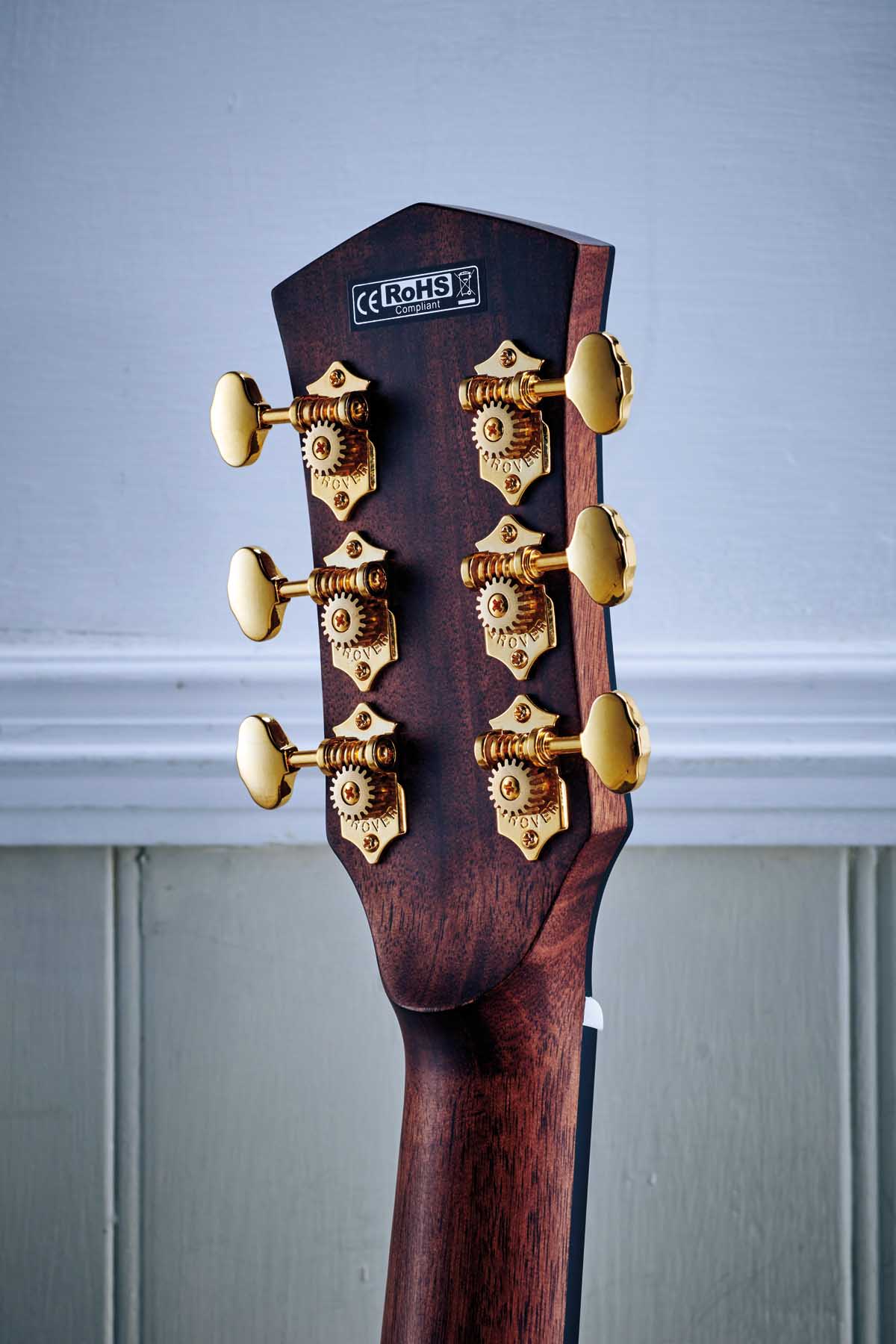
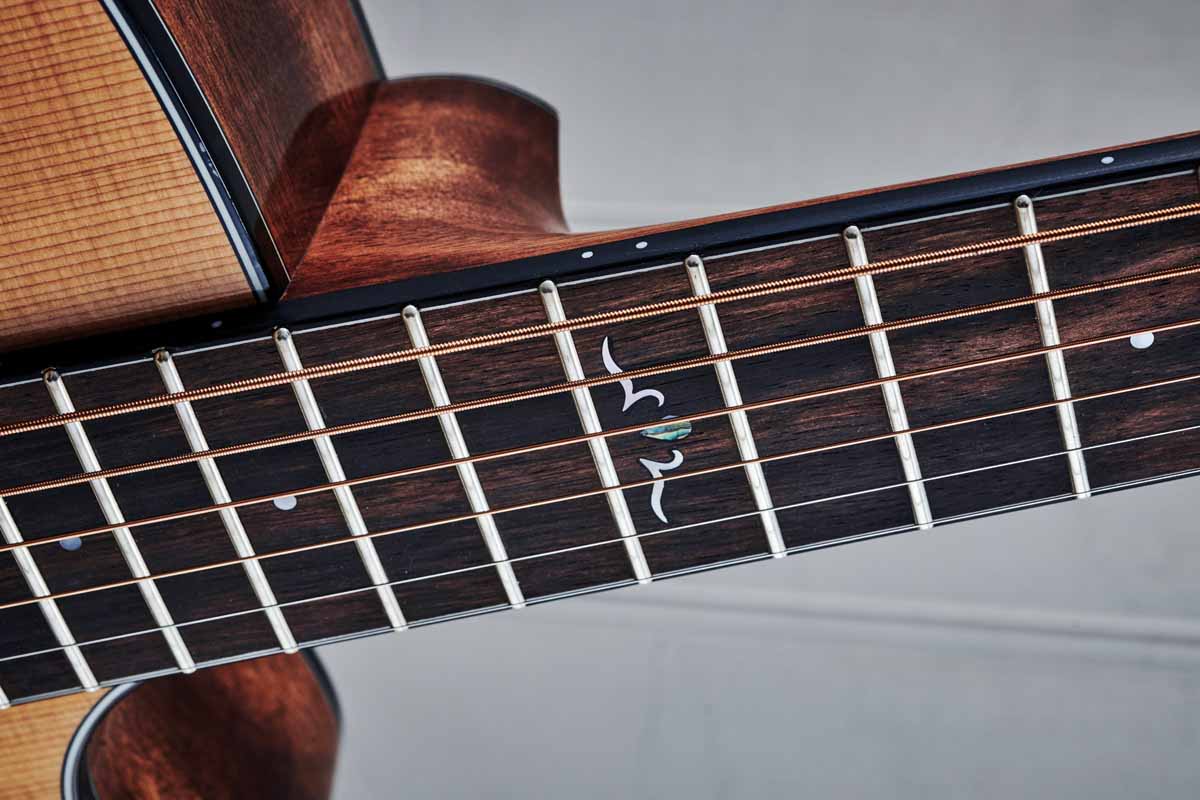
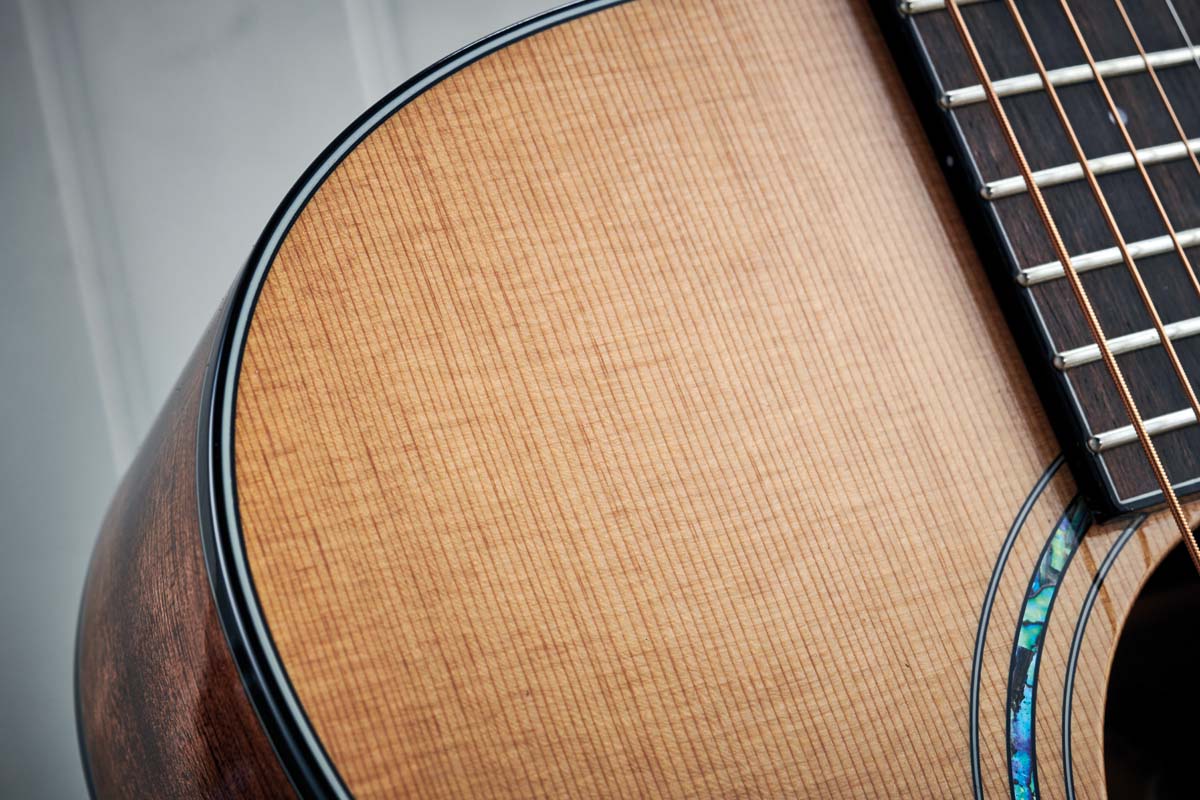
The OC6 comes equipped with a Fishman Flex Blend system that combines an under-saddle piezo with a mic that is located under the bridge side of the guitar’s soundhole.
The three controls comprise volume, blend and tone, the latter of which has been calibrated to offer the player everything from a totally flat EQ to the scooped mids you find on many a fingerstylist’s tonal setup.
There’s even a tuner that automatically mutes the guitar’s output for discreet tweaks or alternative tuning mischief when playing live.
Verdict
There’s an awful lot here to play with – plenty of bang for one’s buck, you might say. Ecologically speaking, your mind is at rest with this instrument on your lap and construction features such as the reinforced neck, torrefied top, double-lock neck joint and the flexible Fishman pickup system represent some detailed thinking on Cort’s behalf.
It’s true that the relatively narrow nut width will put off some players, but, thinking positively, players who are used to electric guitars might feel more at home during the occasional acoustic number in their band’s set with this model.
Then, just look at the price – all these features and a good set of lungs at under £800 isn’t to be sniffed at. Try one, we think you’ll be impressed. We were.
Specs
- PRICE: $1,099 / £749 (inc gigbag)
- ORIGIN: China
- TYPE: OM cutaway
- TOP: Sitka spruce
- BACK/SIDES: Okoume
- MAX RIM DEPTH: 103mm
- MAX BODY WIDTH: 385mm
- NECK: Palaquium
- SCALE LENGTH: 643mm (23.3”)
- TUNERS: Grover deluxe vintage gold
- NUT/WIDTH: Bone/43mm
- FINGERBOARD: Macassar ebony
- FRETS: 20
- BRIDGE/SPACING: Ebony/54mm
- ELECTRICS: Fishman Flex Blend System
- WEIGHT (kg/lb): 1.6/3.52
- OPTIONS: The Gold O6 is the non-cutaway version at £549
- RANGE OPTIONS: Cort’s Gold Series comprises 13 instruments including the Gold O8 OM size non-cutaway (£697), the Gold A8 auditorium (£879), and the Gold-Edge LE (£1,299)
- LEFT-HANDERS: No
- FINISH: Natural satin (as reviewed) or Natural Glossy – “Sonically enhanced UV”
- CONTACT: Cort Guitars
With over 30 years’ experience writing for guitar magazines, including at one time occupying the role of editor for Guitarist and Guitar Techniques, David is also the best-selling author of a number of guitar books for Sanctuary Publishing, Music Sales, Mel Bay and Hal Leonard. As a player he has performed with blues sax legend Dick Heckstall-Smith, played rock ’n’ roll in Marty Wilde’s band, duetted with Martin Taylor and taken part in charity gigs backing Gary Moore, Bernie Marsden and Robbie McIntosh, among others. An avid composer of acoustic guitar instrumentals, he has released two acclaimed albums, Nocturnal and Arboretum.
The heaviest acoustic guitar ever made? Two budding builders craft an acoustic entirely from concrete because they “thought the idea was really funny”
“For years, the only 12-string acoustics I got my hands on, the necks always pulled off after a bit. I earned a lot of money replacing them!” Why one of the UK’s most prolific luthiers is a bolt-on acoustic die-hard












